Rich soil: The economic benefits of green schoolyards
Nature-filled schoolyards – or green schoolyards – provide a wealth of well-documented benefits for children’s health, well-being and learning. A growing number of communities are also considering the role of green schoolyards in supporting climate resilience.
But there’s another silver lining to the practice of greening schoolyards, worth its weight in gold: Green schoolyards provide economic benefits to school districts, as well as society as a whole. The effects of nature-filled schoolyards can be seen across a variety of economic indicators, including local property taxes, student achievement, children’s long-term health and environmental sustainability metrics.
What is a green schoolyard?
Green schoolyards are nature-filled, multi-functional school grounds with spaces to play, learn, explore and grow.
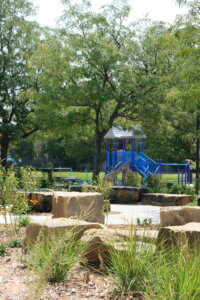
Pollinator and native landscapes at Oakland Elementary in Denver, Colorado. Photo Credit: Lois Brink
Typical qualities of a green schoolyard may include:
- Nature play features with natural materials such as stumps, logs, river rocks and sand, as well as more traditional playground features, sports fields and courts.
- Native plants that provide habitat for local wildlife.
- Pollinator and vegetable gardens for children to tend.
- Outdoor classrooms, allowing educators to teach nature-based lessons.
- Features that divert and capture stormwater.
- Trees and vegetation that reduce ambient temperatures, sequester carbon, remove air pollutants and increase wildlife habitats.
- Open access for community use during evenings, weekends and summers, serving as a park space for nearby residents.
Report investigates green schoolyards’ impacts
A new report, “How Green Schoolyards Create Economic Value,” authored by former Federal Reserve economist Rob Grunewald, investigates the economic returns that can accompany investments in greening school grounds.
Grunewald based much of his report on data provided by a recent study in Denver, Colorado, conducted by The Big SandBox and Autocase Economic Advisory, who analyzed the effects of a large-scale green schoolyard conversion project. From 2000 to 2012, Denver Public Schools (DPS) converted 99 traditional elementary schoolyards encompassing 306 acres to green schoolyards – or “Learning Landscapes.”
Lois Brink, chief strategist for The Big SandBox, was a lead researcher for the Denver study. “The Denver study is the first to analyze data from a districtwide green schoolyard conversion in a large urban school district to estimate many different types of effects,” says Brink. “Because the Learning Landscapes implementation took place over 12 years, we were able to compare school-level trends prior to converting schoolyards with trends after conversions against data from unconverted schools. Due to this quasi-experimental design, the data reveal causal outcomes, not just correlations.”
According to Priya Cook, director of Green Schoolyards and Communities for the Children & Nature Network: “Grunewald’s report is a landmark achievement as the evidence for the multilayered benefits of green schoolyards continues to accumulate. In addition to implementing green schoolyards for myriad health, learning, and environmental benefits, this new report shows that installing green schoolyards makes economic sense, too.”
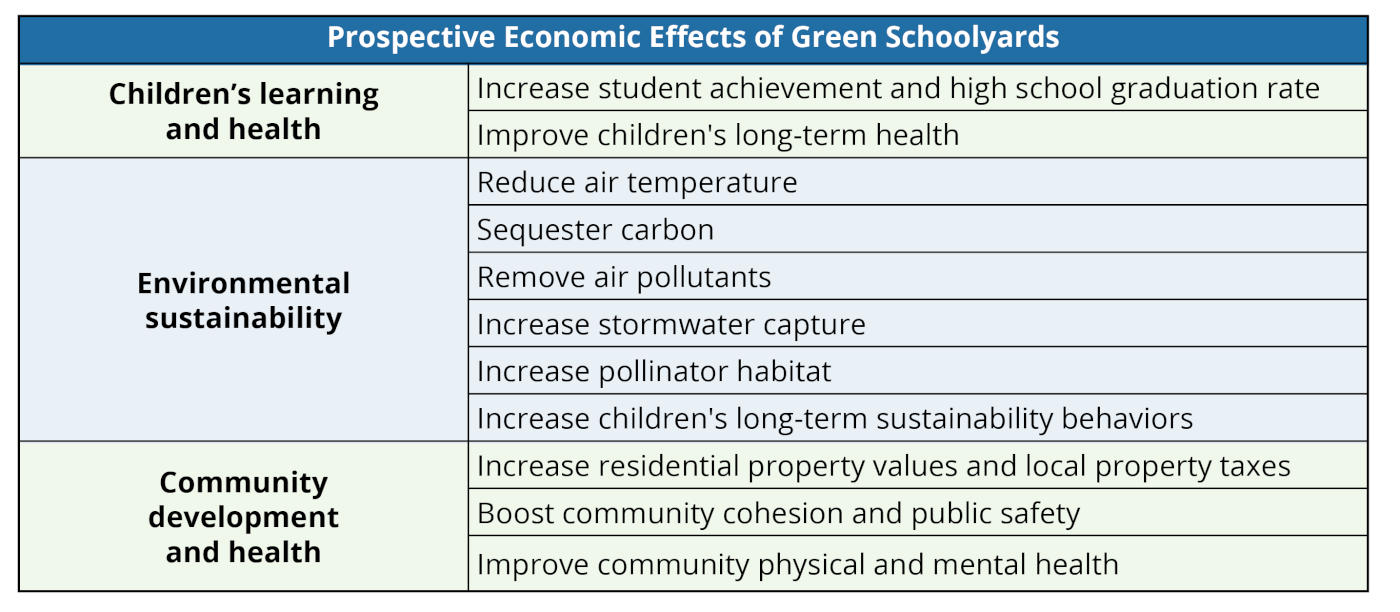
A table from Grunewald’s report lists the economic benefits that may come with transforming traditional school grounds into green schoolyards.
A wealth of economic benefits — A 3:1 return on investment
For economist Grunewald, data from the Denver study and other sources makes a solid circumstantial case that the economic value of investing in green schoolyards is likely larger than costs.
“Green schoolyards benefit many people across many facets of their lives, but markets tend to underinvest in opportunities with diffuse returns,” says Grunewald.
Priya Cook agrees. “This report makes it clear how green schoolyards are a solid economic investment,” she says. “We should be devoting more resources to green schoolyard conversions — not just for student well-being, but for the present and future well-being of their communities.”
Grunewald’s report finds that green schoolyards add the following estimated economic value to communities:
- Statistical estimates in the report show that 60 cents are returned to the community for every dollar spent, based on environmental sustainability outcomes and local property tax increases.
- Applying scenarios informed by other research, “gains in both high school graduation rates and community health could boost the return to over $3 [returned] for every dollar invested,” according to the report.
- Positive economic effects were also indicated in children’s improved long-term health and sustainability behaviors, increased pollinator habitat, and boosted community cohesion and public safety. However, methods were not available to calculate their monetary values.
Green schoolyards can also deliver economic benefits that accrue to their respective school districts, including:
- Increased enrollment and state education funding
- Improved working conditions for teachers
- Potential for attracting support for bond measures that also fund deferred capital projects and education needs
Building upon the Denver study, Grunewald’s report finds that “converting paved schoolyards at elementary schools to nature-filled green schoolyards creates economic value by boosting children’s learning, enhancing environmental sustainability, and supporting community development and health.”
“Because there are several types of benefits, a green schoolyard doesn’t depend on gains in just one area to achieve robust value,” says Grunewald. “And, since the benefits span several different sectors, mechanisms that facilitate cross-sector collaboration and financing could help move green schoolyard projects forward.”
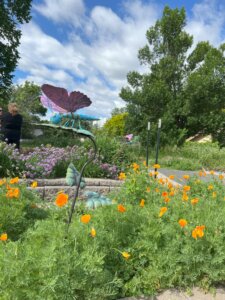
Ellis Elementary School after conversion to a green schoolyard.
Green schoolyards also have implications for advancing equity. The benefits to students with nature-filled schoolyards include improved mental and physical health as well as academic achievement. Yet traditional asphalt schoolyards remain disproportionately concentrated in low-income and racially and ethnically diverse urban neighborhoods. As such, transforming schoolyards and increasing access to green schoolyards can be strategies to help close gaps in educational attainment, health and community investment between low-income and affluent areas.
More research is needed to fully understand the economic value of green schoolyards, but the report concludes that there is a strong case for converting traditional asphalt into nature-filled green schoolyards. Rich with opportunities for nature connection and open-ended play, these schoolyards create wealth for students, school districts and communities — both economic and otherwise.
1 Comment
Submit a Comment
Read the full report, “How Green Schoolyards Create Economic Value,” by Rob Grunewald
Benefits of green schoolyards wheel, an infographic
Read the Denver technical study, “An Analysis of Learning Landscapes: Lessons Learned for a National Movement”
“Community and environmental benefits of green schoolyards,” a Research Digest from October 2023
Global Lessons on Greening School Grounds & Outdoor Learning project
Green Schoolyards Resource Hub
“In Flagstaff, green schoolyards sprout after climate-related disasters,” a Finding Nature News feature story
“In search of a greener schoolyard: As the planet heats up, green schoolyards offer a world of benefits, a Finding Nature News feature story
-
Network News
POLICY UPDATE: Policy and advocacy for the children and nature movement
-
Voices
Binoculars, bald eagles and my journey as a Black birder
-
Richard Louv
THE WONDER BOWL: Ten Spring and Summer Nature Activities for Kids and Adults
-
Network News
Minneapolis Spotlight: The promise and possibilities of parks for youth
-
Voices
Why nature is my motherhood ally


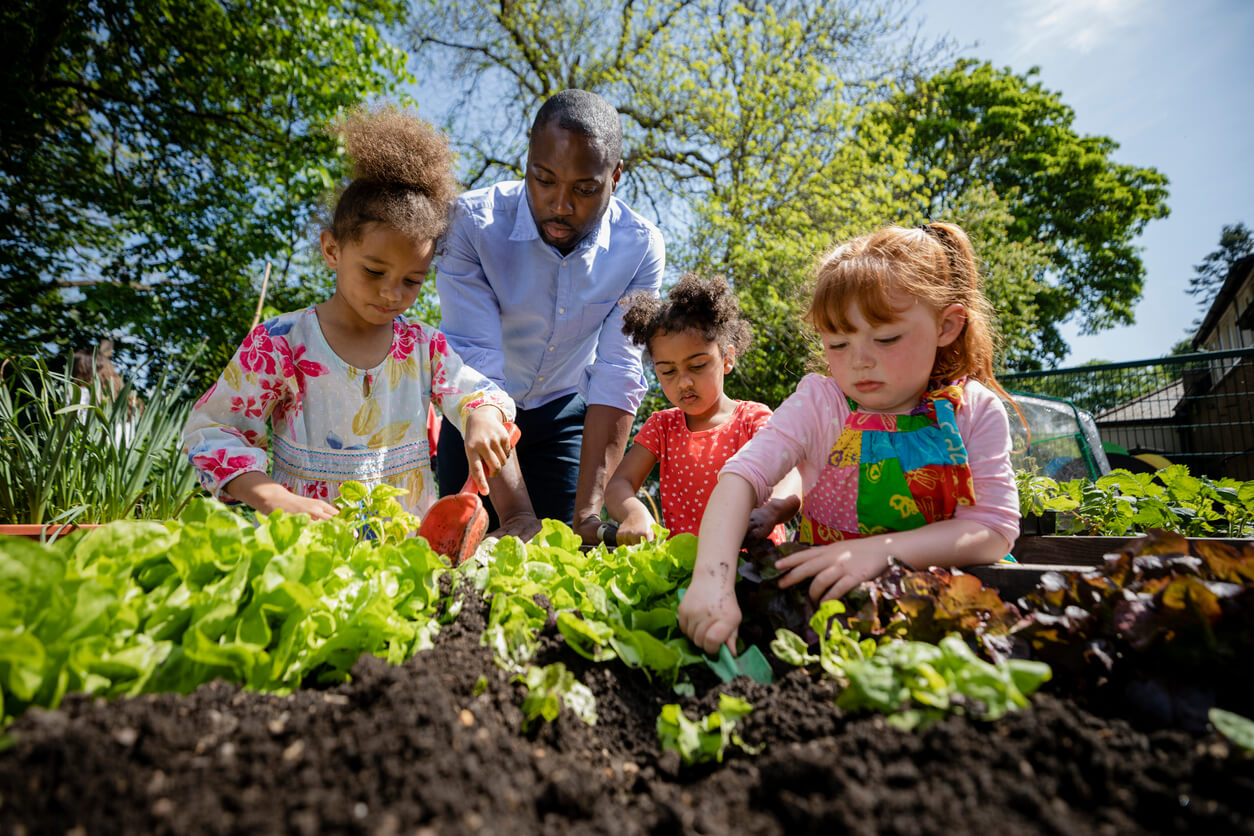
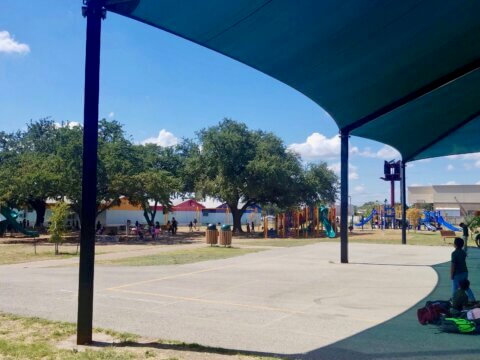

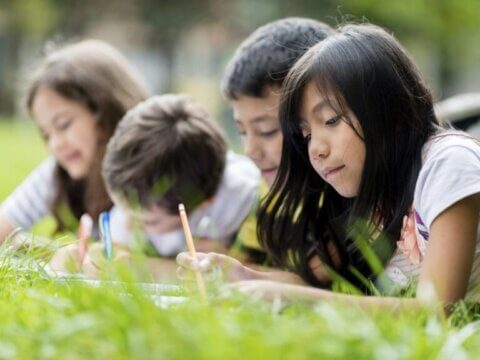
It’s inspiring to see such a comprehensive approach to improving both our children’s futures and our urban environments.